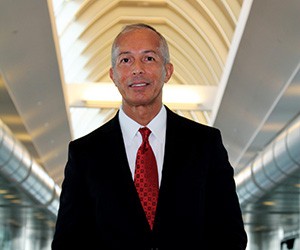Airports throughout the Lone Star State are expanding facilities and services to meet increasing demand, both from a domestic and international standpoint, making the state increasingly attractive for meetings and conventions with attendees from around the globe.
Celebrating its 40th anniversary this year under the direction of new CEO Sean Donohue, former COO for Virgin Australia, Dallas/Fort Worth International Airport continues to cement its place as the nation’s premier international gateway.
Offering nonstop service to 148 domestic destinations and 58 international destinations on five continents (20 routes added over the past three years), DFW is the world’s fourth-busiest airport, offering 1,900 flights per day and serving more than 58 million passengers a year. Whether bringing in attendees for major conventions and sporting events or supplying Texas’ hot culinary scene with fresh food from around the globe, DFW moves the world.
This year, American Airlines added five new nonstop routes: Bogota, Colombia; Roatan, Honduras; Hong Kong and Shanghai, China; and Edmonton, Alberta. Additionally, Qatar Airways added nonstop service to Doha, Qatar, and beginning in December 2014, Etihad Airways will begin nonstop service to Abu Dhabi, United Arab Emirates.
Houston is also boosting its profile as a global destination, and its three airports, George Bush, William P. Hobby and Ellington, play a vital role in connecting the nation’s most diverse city to the world.
“[We’ve had] a period of remarkable and unprecedented growth, during which the Houston Airport System has dramatically expanded its route network while also enhancing the overall customer experience through infrastructure improvement projects,” says Mario Diaz (pictured above), director of the Houston Airport System (HAS).
Multibillion-dollar investments have resulted in new facilities at both George Bush Intercontinental Airport and William P. Hobby Airport, while domestic and foreign carriers continue to capitalize on Houston’s dynamic economy by offering new nonstop flight options.
“Our mission is to connect the world to Houston,” Diaz says.
Representing a $27.5 billion annual economic impact to the Houston region, HAS plays a vital role in maximizing the city’s growth potential.
“Two factors—having the nation’s most diverse population and one of its most dynamic economies—continue to strengthen Houston’s standing as a global gateway city, and it’s up to the airport system to support that momentum and keep it moving forward,” Diaz says.
HAS posted a record number of international passengers in each of the past five years, during which it welcomed five new international air carriers: Qatar Airways, Turkish Airlines, Air China, Korean Air and Scandinavian Airlines.
“This growth is vital in enhancing Houston’s position as a key global gateway city,” Diaz says.
Offering three distinct airport facilities, nonstop flights to 190 different destinations spanning five continents and a strong reputation for utilizing cutting-edge pilot programs and technology in expediting the airport travel experience, HAS’ global connectivity and commitment to customer service sets it within a very competitive industry—for planners and attendees alike, according to Diaz.
Meanwhile, Austin-Bergstrom International Airport, turning 15 this year, continues to support the growth of Austin’s meetings and major events (such as the soaring attendance at the annual multiprogrammatic SXSW Festival) while offering visitors an ambassadorial first taste of the city with live music, art, friendly people and internationally acclaimed Salt Lick Bar-B-Cue. Having recently renovated its Terminal A, San Antonio International Airport has long-range plans to add a new terminal building.




